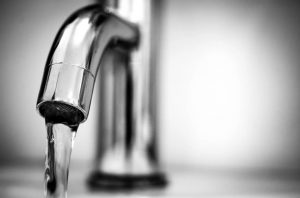 The term “corrosive water” is often misunderstood, but it’s used to describe water that’s more aggressive because it can dissolve minerals it comes into contact with. Corrosive water is not dangerous in itself, but it may dissolve metals and certain other components within the plumbing system. This can cause some water quality issues, and they may represent a threat to the health of your family.
The term “corrosive water” is often misunderstood, but it’s used to describe water that’s more aggressive because it can dissolve minerals it comes into contact with. Corrosive water is not dangerous in itself, but it may dissolve metals and certain other components within the plumbing system. This can cause some water quality issues, and they may represent a threat to the health of your family.
Corrosion Problems Explained
The pipes, solder, and plumbing fixtures in an older home are often made from copper, lead, and other metals. Corrosive water can dissolve these materials, which can lead to aesthetic or health problems within the drinking water. In extreme cases, the corrosion can even cause pinhole or larger leaks in the systems.
Homes built prior to 1991 may have lead solder joints in the plumbing system. Corrosive water may dissolve the lead and release small quantities into your drinking water. The EPA has determined that there is no acceptable consumption level for lead. Exposure to even small quantities can lead to very serious health risks.
Corrosive water can also damage modern PVC pipes and components too. This can lead to the release of vinyl chloride into the drinking water, which is a health risk. This tends to be a problem when lower quality pipes are used that are not approved for drinking water systems. All plastic pipes that are used to carry drinking water should have a National Sanitation Foundation (NSF) seal stamped on them.
3 Corrosive Water Signs
There are three signs that you may have corrosive water:
1. Strange Aesthetic Qualities
Drinking water should not have any discernible color, taste, or odor. Corrosive water may dissolve copper from pipes and fixtures, which can lead to the formation of blue and green stains. The water may have a distinct metallic taste that is stronger earlier in the day when the water has been sat in the pipes overnight.
2. Persistent Water Leaks
Any plumbing system can develop water leaks, and most homes have at least a few small leaks that can remain undetected for a long time. But, if you have corrosive water, you may notice that you have small water leaks regularly.
3. No Obvious Indicators
If you have either of the aforementioned problems, it’s easier to identify the presence of corrosive water. But, the corrosive water may be tasteless, colorless, and odorless. This makes it much harder to detect corrosive water without professional water testing. If your water has a PH level lower than 7, it tends to be more acidic, and this can make it more corrosive, but there are other factors to consider. A local water treatment specialist will check the pH, hardness, and calcium concentration to determine if the water is corrosive.
Resolving Corrosive Water Issues
There are a number of ways to resolve a corrosive water problem. The exact system that you choose should be determined by the exact characteristics of your water. Contact a WQA certified water treatment professional and ask them about water testing and a point of entry (POE) system to improve the quality of your drinking water.
About The Author:
Greg Scott is President of Valparaiso based Miracle/EcoWater Systems, the premier water conditioning company in Northwest Indiana serving the Lake, Porter, and LaPorte County areas. A 3rd generation water treatment professional, Greg grew up in the family owned business started by his grandfather in the late fifties. He has made water treatment his life, and under his direction and high-standards, the company’s water treatment experience, knowledge, and products are unrivaled in the region.
